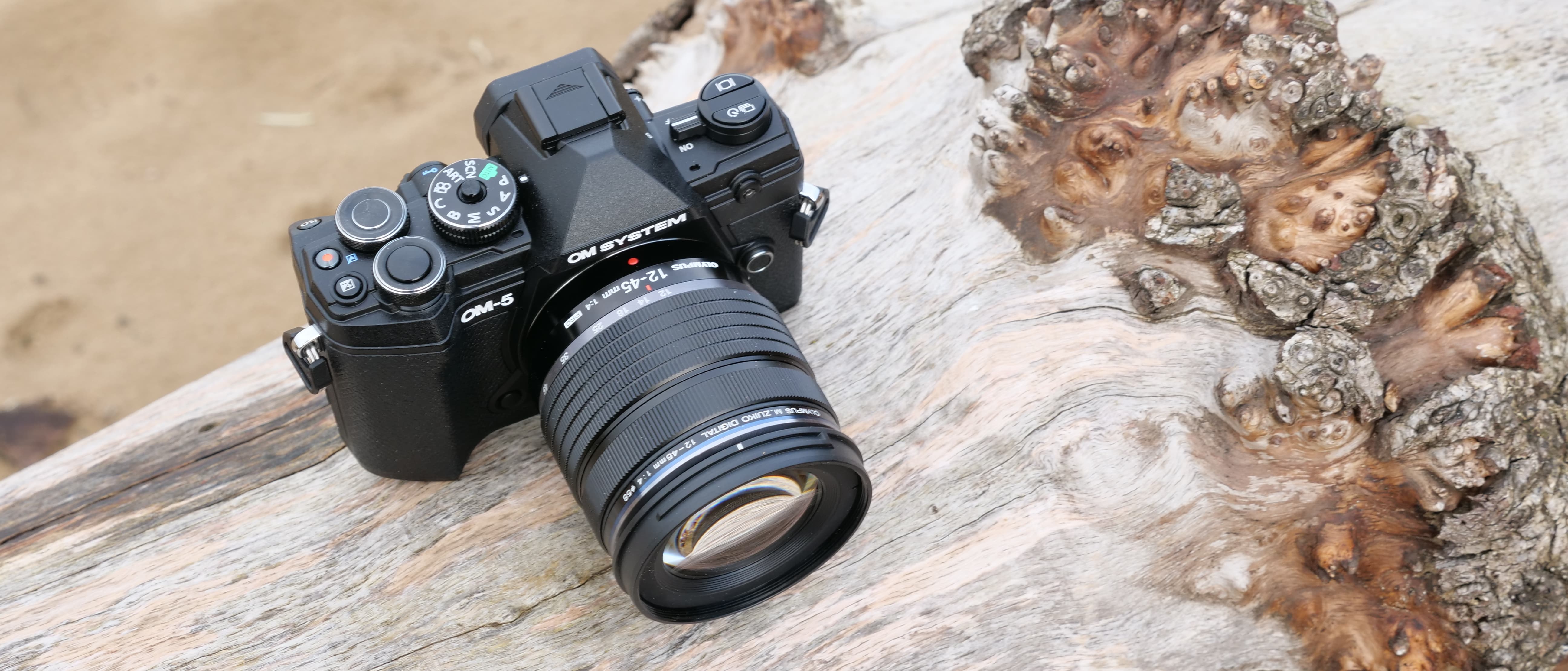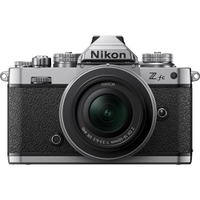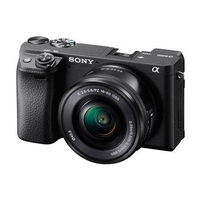TechRadar Verdict
The OM-5 is the mid-range model in the OM System Micro Four Thirds range. Apart from some performance and processing tweaks, it’s almost the same as the previous E-M5 Mark III to handle and use; but that’s okay, because this is still a smart, compact and very powerful camera for adventure and travel fans everywhere, with brilliant stabilization, strong weatherproofing and a great lens line-up.
Pros
- +
Small size
- +
Powerful features
- +
Excellent stabilization
- +
Great lens line-up
- +
Clever computational shooting modes
Cons
- -
Essentially a refresh of the E-M5 Mark III
- -
4K 30p video adequate but no more
- -
Too small for bigger Pro lenses
- -
EVF resolution only average
Why you can trust TechRadar
Editor's Note
• Original review date: November 2022
• Launch price: Body only $1,199.99 / £1,199 / AU$2,150
• Official price now: Body only $1,199.99 / £1,199 / AU$2,150
Update: March 2024. OM System does compact mirrorless camera systems for photography better than anyone, using a micro four thirds sensor that strikes an excellent balance between performance and size, not to mention a huge range of lenses available for all types of photography and budgets. The OM-5 feels great in the hand, looks the part and boasts superb image stablization meaning you can ditch the tripod and pack light. It was a minor update of the EM5 III, but in 2024 it remains one of the best travel cameras for enthusiasts.

OM System OM-5: two-minute review
The OM System OM-5 is kind of new, but not in a big way. It’s really a refresh and an update of the Olympus OM-D E-M5 Mark III, with new branding, improved stabilization and weatherproofing, and a couple of new features from higher-end models, including starry sky AF, and live ND filters for longer exposures in bright light.
The main specs stay the same, including the 20MP MFT sensor, 121-point phase-detect AF, and video up to 4K 30p. That might sound a little disappointing, but there’s more to the OM-5 than the headline specs.
Sensor: 20.4MP MFT Live MOS
AF points: 121-point phase detect
Video: C4K 24p, 4K 30p, FHD 60p, High-speed 120p FHD
Viewfinder: OLED 2.36m-dot
Memory card: Single SD/SDHC/SDXC UHS-II
LCD: 3-inch vari-angle touch 1.04m-dot
Max Burst: 10fps mechanical shutter (buffer unlimited JPEG / 149 raw), 30fps electronic shutter (buffer 20 JPEG / 18 raw), 30fps Pro Capture
Connectivity: Wi-Fi, Bluetooth, Mic, HDMI Type D, USB 2
Size: 125.3 x 85.2 x 49.7mm
Weight: 414g (inc. battery and SD card)
For a start, like the E-M5 III before it, it packs a lot of features, controls and performance into a very small body. This is a pocket-sized interchangeable lens camera that can shoot at 10fps, or 30fps with 14-shot pre-buffer in Pro Capture mode. It has Live Bulb and Live Composite modes for watching exposure build ‘live’ at night, and its pixel-shift High Res capture mode can create 50MP images handheld, and 80MP images on a tripod.
The external controls are remarkably well laid out for a camera so small, with a real quality feel to them, and as well as an EVF you get a vari-angle screen. OM System is pitching this as a go-anywhere adventure camera and it’s certainly one of the best travel cameras you can buy, thanks in part to some excellent, compact and affordable lenses.
The OM-5 may not break any technical barriers, but as a piece of intelligent product design, it’s pretty remarkable.
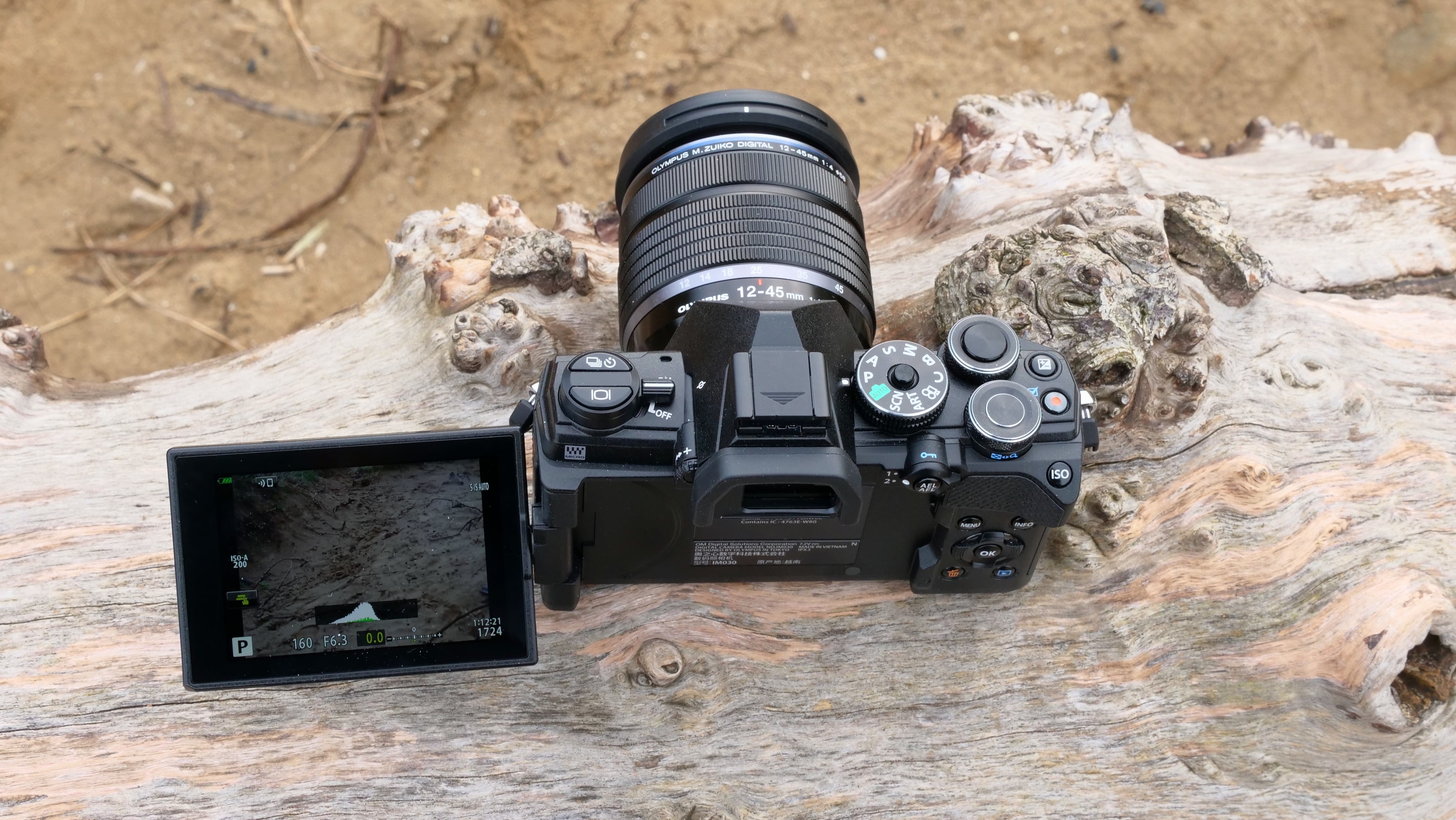
OM System OM-5: price and release date
• OM System OM-5 body only: $1,199.99 / £1,199 (about AU$2,150)
• OM System OM-5 with 12-45mm f/4 Pro lens: $1,599.99 / £1,499 (about AU$2,850)
• OM System OM-5 with 14-150mm f/5.6 II lens (UK only): £1,499
The previous Olympus OM-D E-M5 III was never a cheap camera, and that’s worth mentioning, because although the OM-5 has a new maker and a new model name, it's largely the same camera.
So if the OM-5’s predecessor seemed stubbornly pricey back then, the same applies now. The OM-5 is a powerful little camera, but it does not do anything remarkable for the money; it's worth its price tag in our opinion, but you're not getting a bargain in terms of value for money.
It’s up against some good cameras in the same price bracket, including the Canon EOS R10, Fujifilm X-S10, Nikon Z50 and Sony A6400, all of which have APS-C sensors. But then the Canon and the Nikon don’t have any lenses to speak of (it’s true!), and the A6400 is an old camera with no IBIS, which leaves the Fujifilm X-S10 as the most serious competitor.
The OM-5 has a smaller MFT sensor, of course. A lot of folk are convinced this gives it a serious image quality disadvantage – wrongly, as it happens. What it also has is a range of lenses that's broadar then those of it's rivals, and the lenses themselves are physically smaller. You can’t use a camera without lenses.
• Value rating: 4/5
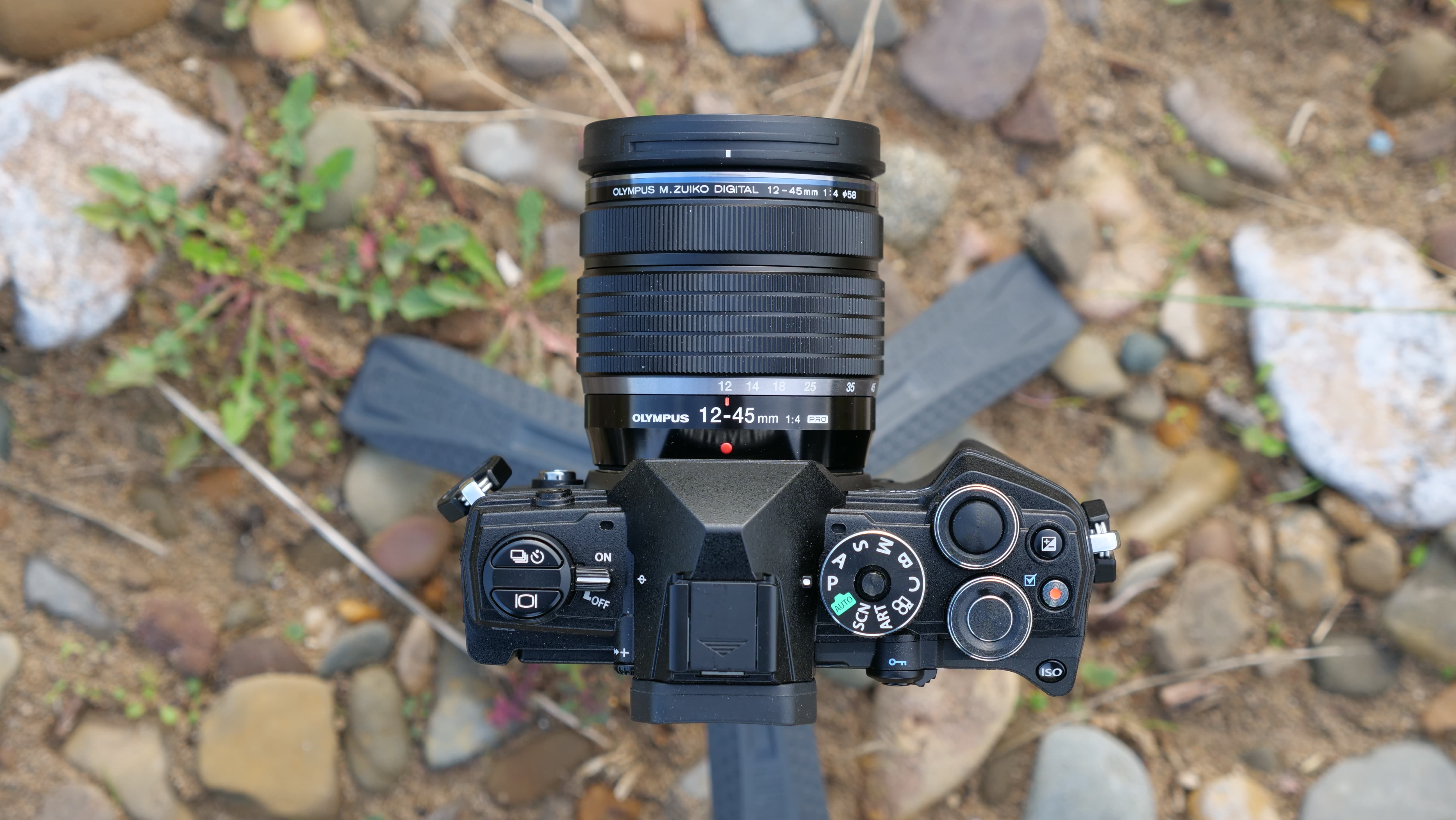
OM System OM-5 design and handling
• Mini-DSLR style design
• Flip-out vari-angle screen
• Single SD card slot
• Twin control dials
• Dual mode function lever
For a camera packing this performance, power, and range of features, the OM-5 is very small. This could be a good thing or a bad thing, depending on whether you're using big professional, constant-aperture lenses, or the smaller zooms and primes from the Olympus range – and whether you're looking for a tiny travel camera or a big do-it-all mirrorless with serious grunt.
With smaller lenses, the OM-5 is just divine. If you want to use larger lenses, it really needs the optional grip (this doesn't take extra batteries; it's just a bigger grip) in order for it to feel balanced and comfortable.
Regardless of that, OM System (not ‘Olympus’, remember) has done a remarkable job of getting a lot of very usable physical controls onto such a small body.
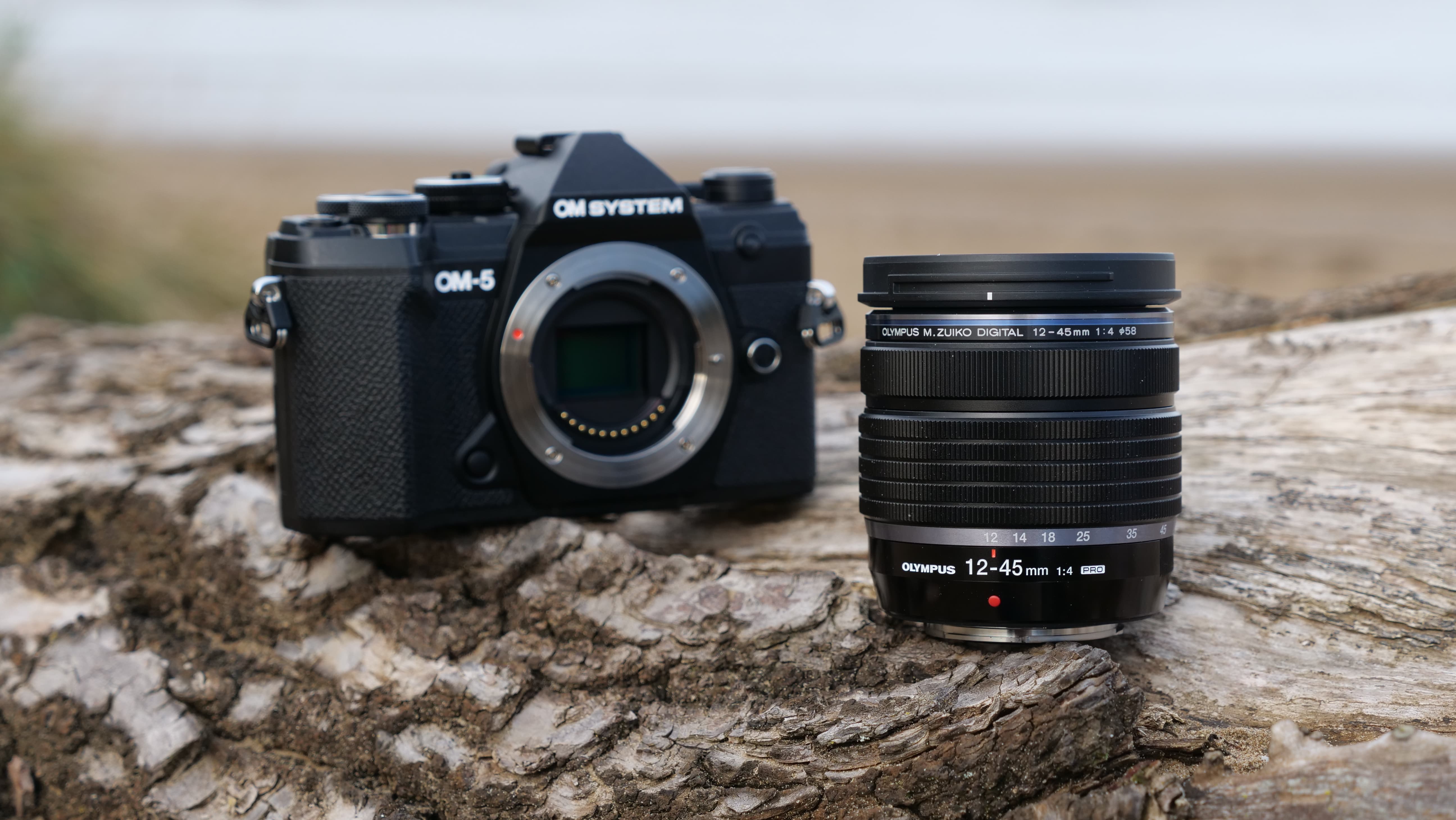
The EVF is good enough, though it lacks the outright resolution of newer and more expensive rivals, and the flip-out vari-angle screen on the back is a nice feature on a camera as small as this, and a useful one too.
The single SD card slot might deter power users looking for the additional security and backup options of a dual-card setup, but there’s a limit to how much you can fit into a body as small as this. One reason for choosing two card slots is to cover the possibility of card failure, which is rare. Another is to separate stills and video, JPEGs and raw, captures and backups – all of which are reasonable pro requirements, but somewhat outside the remit of a camera like this.
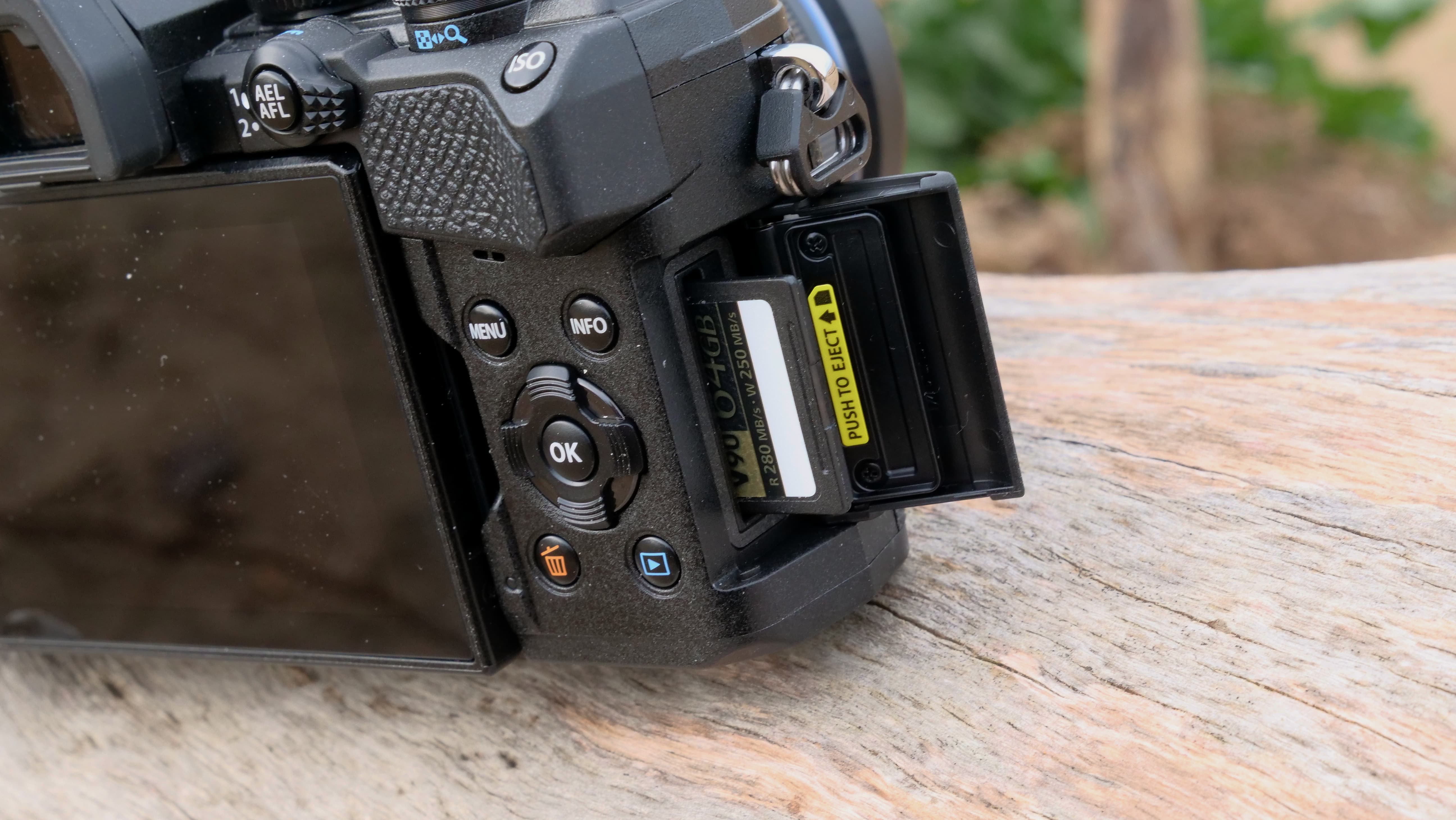
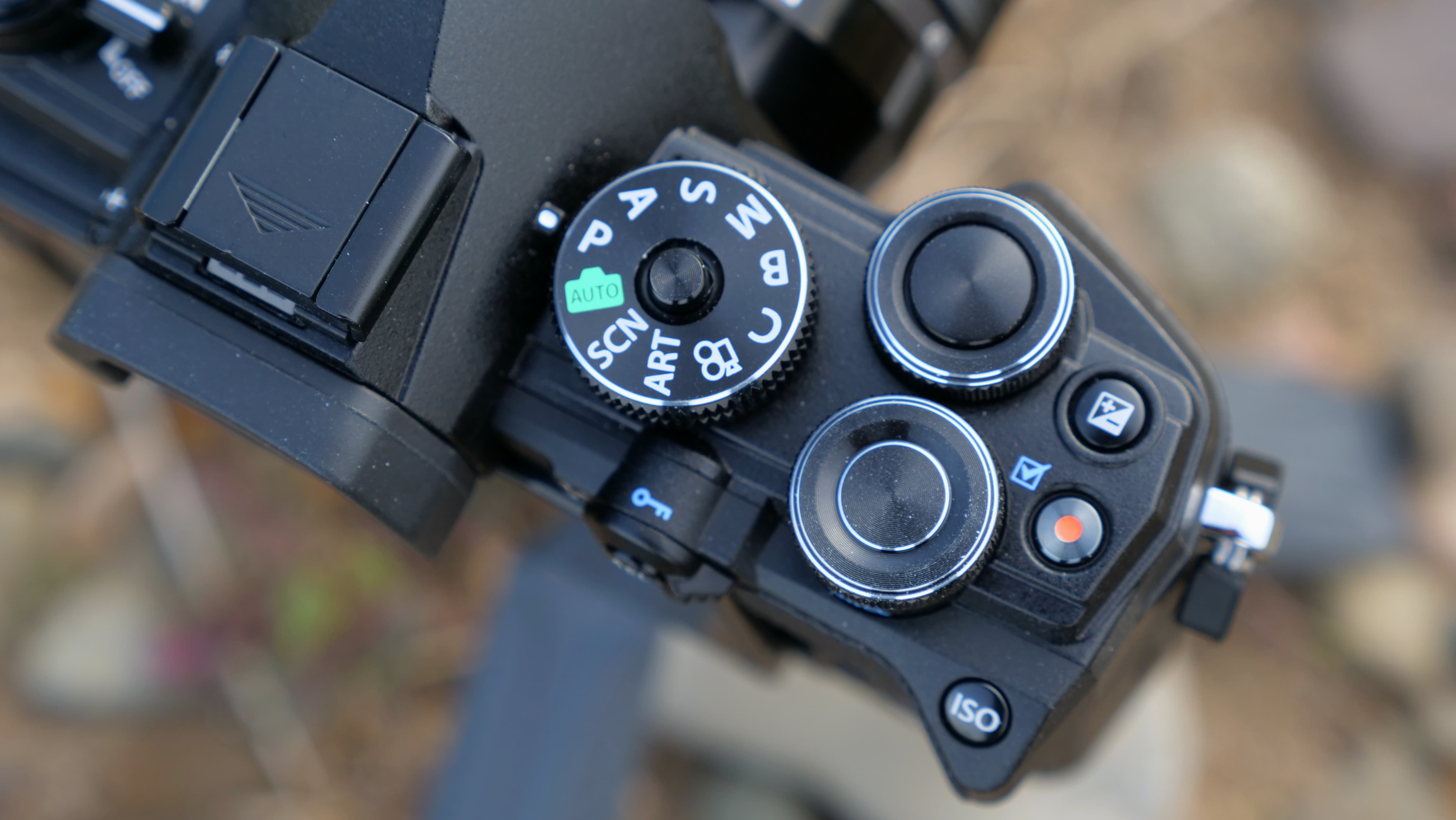
There are two control dials on the top of the E-M5 and these work really well, and are given extra versatility by the dual-mode lever on the back of the camera which switches their functions. You do have to remember what you’ve set these dials up to do for each function mode, but if you can do that you’ll get a very quick system for changing a multitude of settings from shutter speed to aperture, and from white balance to EV compensation.
The OM-5’s external controls have a quality feel, and a logic that’s very endearing. Olympus (sorry, OM System – it still takes some getting used to) is very good indeed at making the controls on small cameras work as well as, or better than, those on larger ones.
• Design score: 5/5
OM System OM-5: features and performance
• 6.5-stop IBIS (7.5-stop with sync IS)
• Extensive and customizable Art Filters
• Pro Capture with pre-shot buffer
• In-camera focus stacking
• 50MP/80MP High Res Shot
• Live Composite, Live Bulb, Live ND
Practically every camera maker in the world now offers 5-axis in-body stabilization systems which it considers the best on the market. But OM System (see, we didn’t say ‘Olympus’!) and Panasonic between them have, we would say, the best. It’s perhaps to do with the smaller sensor size and mass, or the algorithms used, but the OM-5’s stabilization is pretty remarkable. It has its limits for video – an IBIS system simply can’t smooth camera movements like a gimbal – but for all the perceived ‘faults’ of MFT systems, the stabilization is remarkable.
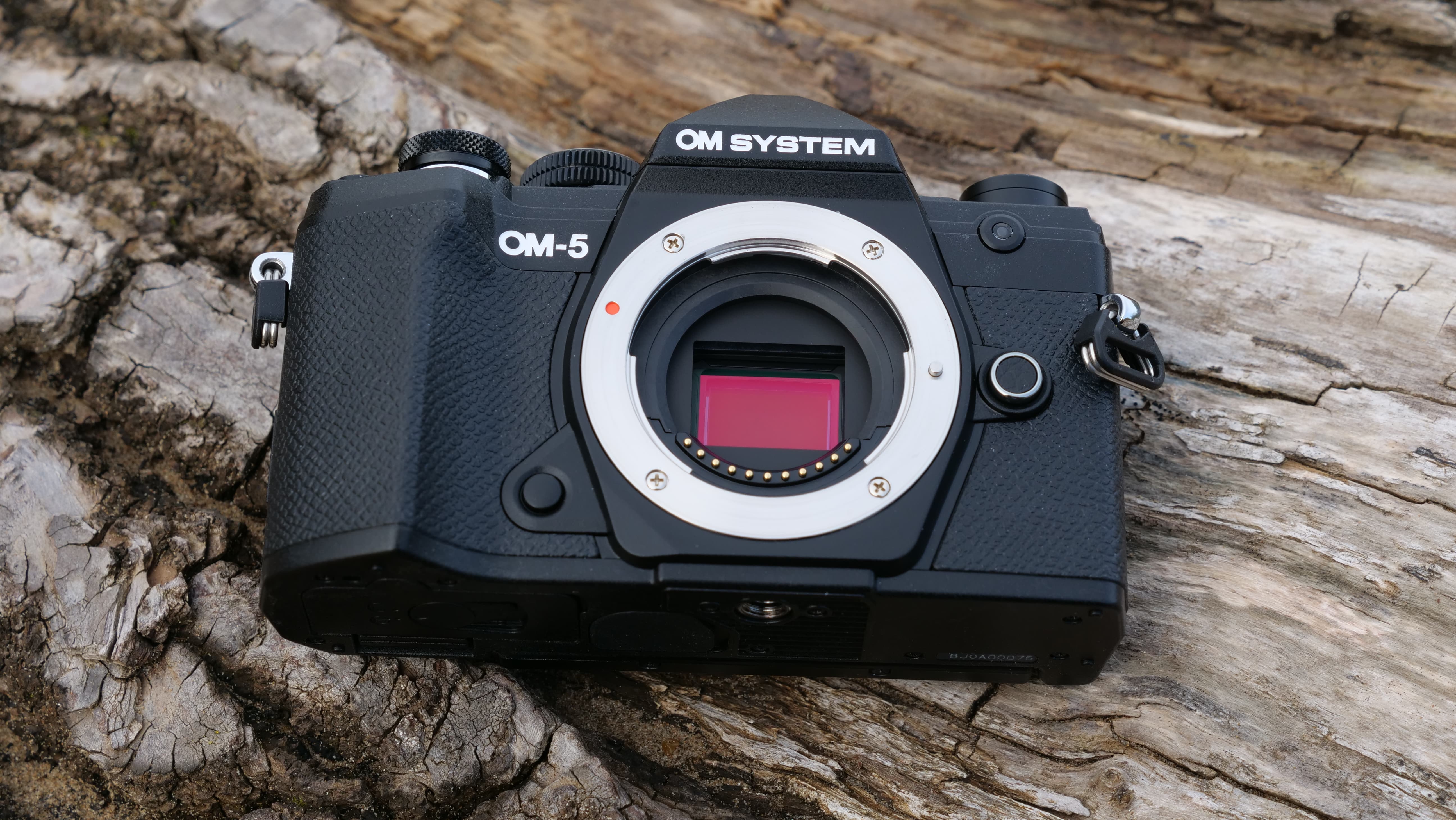
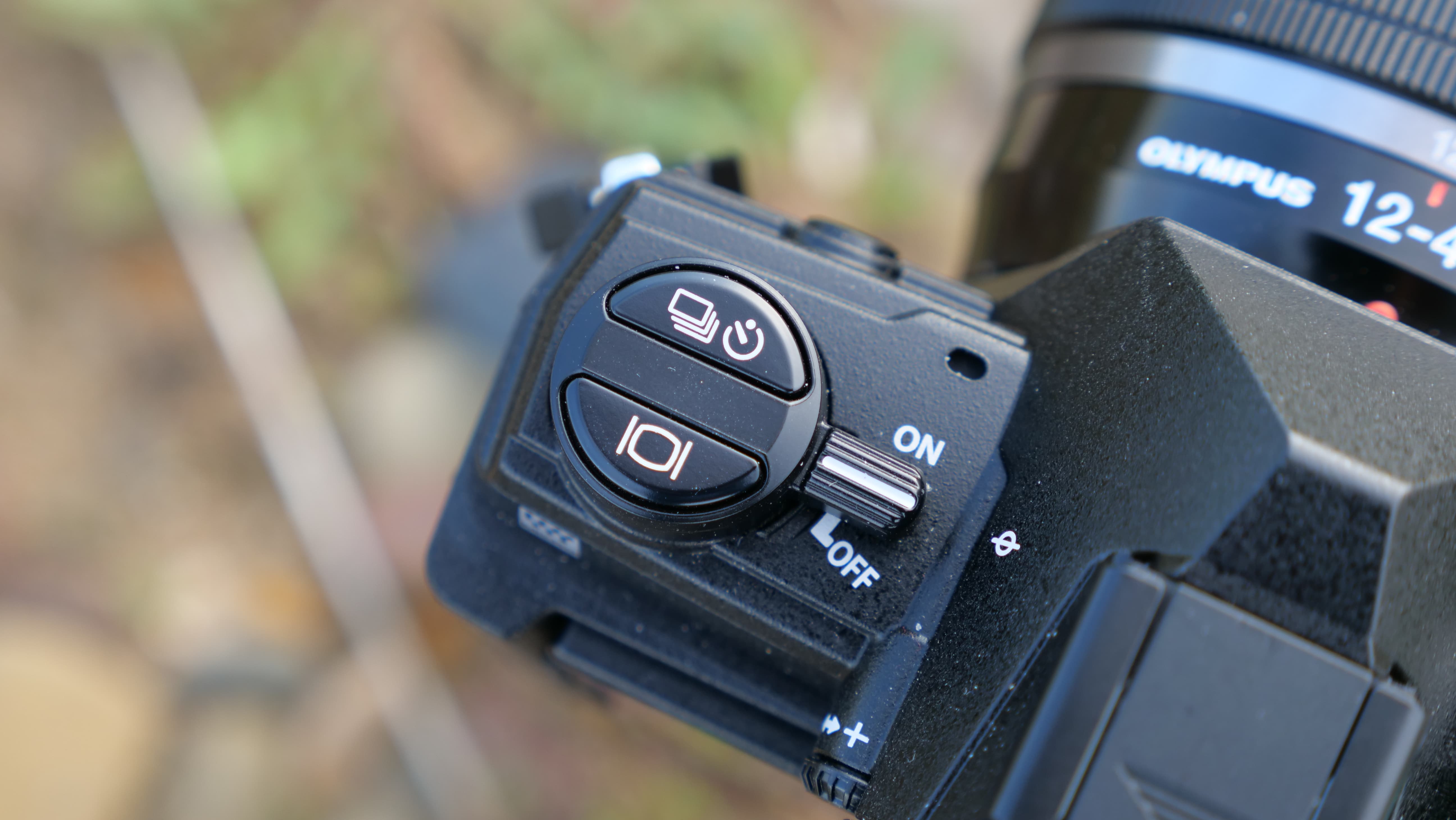
The OM-5 has many other strengths. One of these is its Pro Capture mode, which can capture still images at 30fps with a 14-shot pre-capture buffer to allow for your reaction time. So you can half-press the shutter release for a ‘rolling’ capture, then press it the rest of the way when the action starts, and the camera will record the half-second of action while you were still thinking about it. That’s clever. The only drawback is that the focus is fixed from the start unless you swap to a slower 10fps frame rate – but AF-S is still fine for setups where you know where the action is going to happen, such as the jumps in a horse race or the bar in a high jump.
The OM-5 uses a lot of computational features that include in-camera focus stacking, which you can use handheld, and a 50MP High Res Shot mode, also handheld, for those times when you might actually need the resolution of a high-res full-frame camera – and it really does generate natively higher-resolution images, not some kind of lame substitute.
On top of that, you've got Olympus’s Live Composite, Live Bulb and Live ND modes. The first two are really good for night shots – once you’ve worked out the settings and parameters – while the second promises the same effect as ND filters for blurring skies, surf and water. This is limited to a 4-stop reduction, however, when for long exposures in bright light you really need a 10-stop reduction.
Finally, Olympus’s Art Filters are worth a mention. These are not the pretty plain 'looks' you might get from other cameras, but actually rather good analog effects.
• Features and performance score: 5/5
OM System OM-5: image and video quality
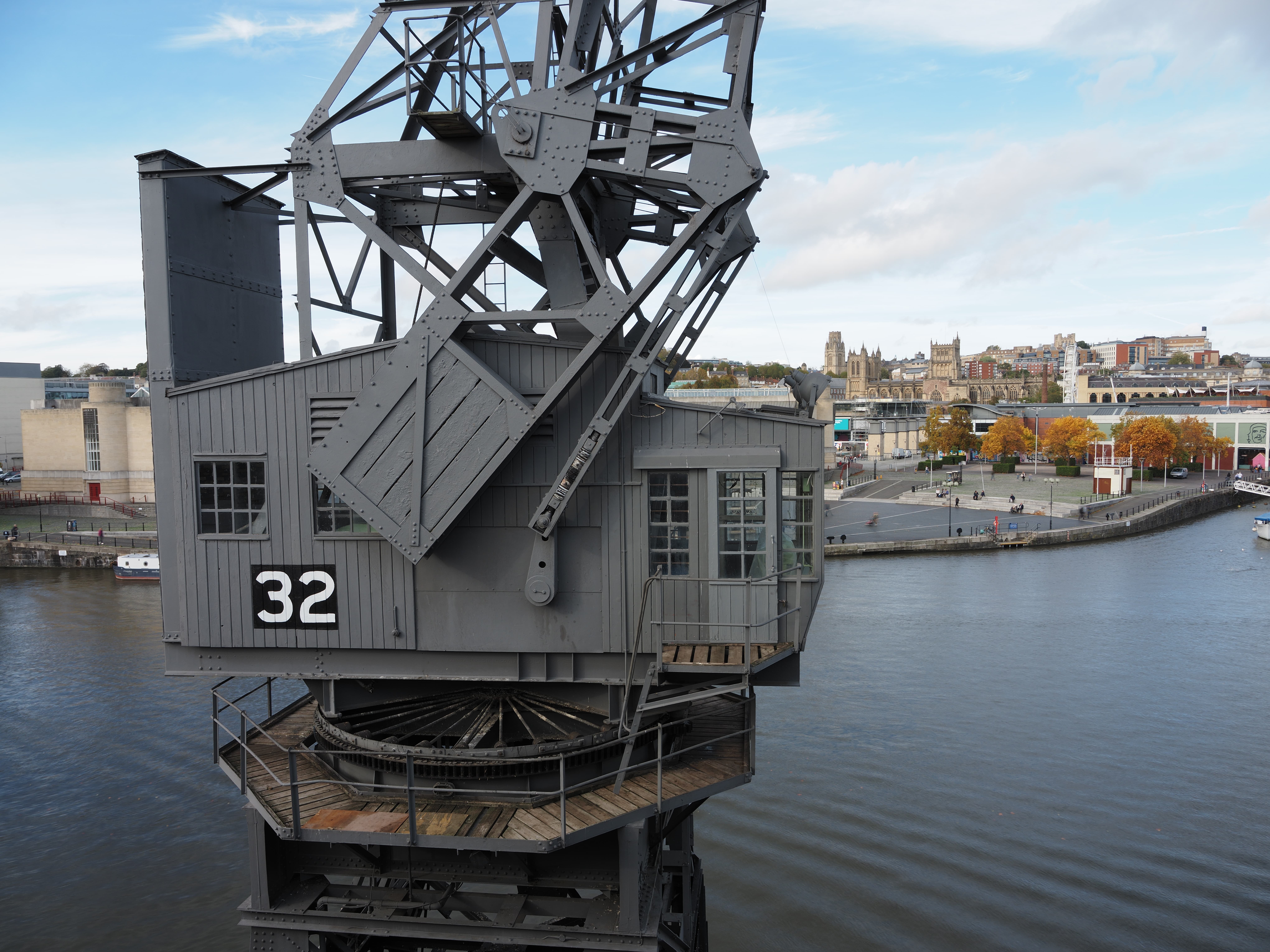

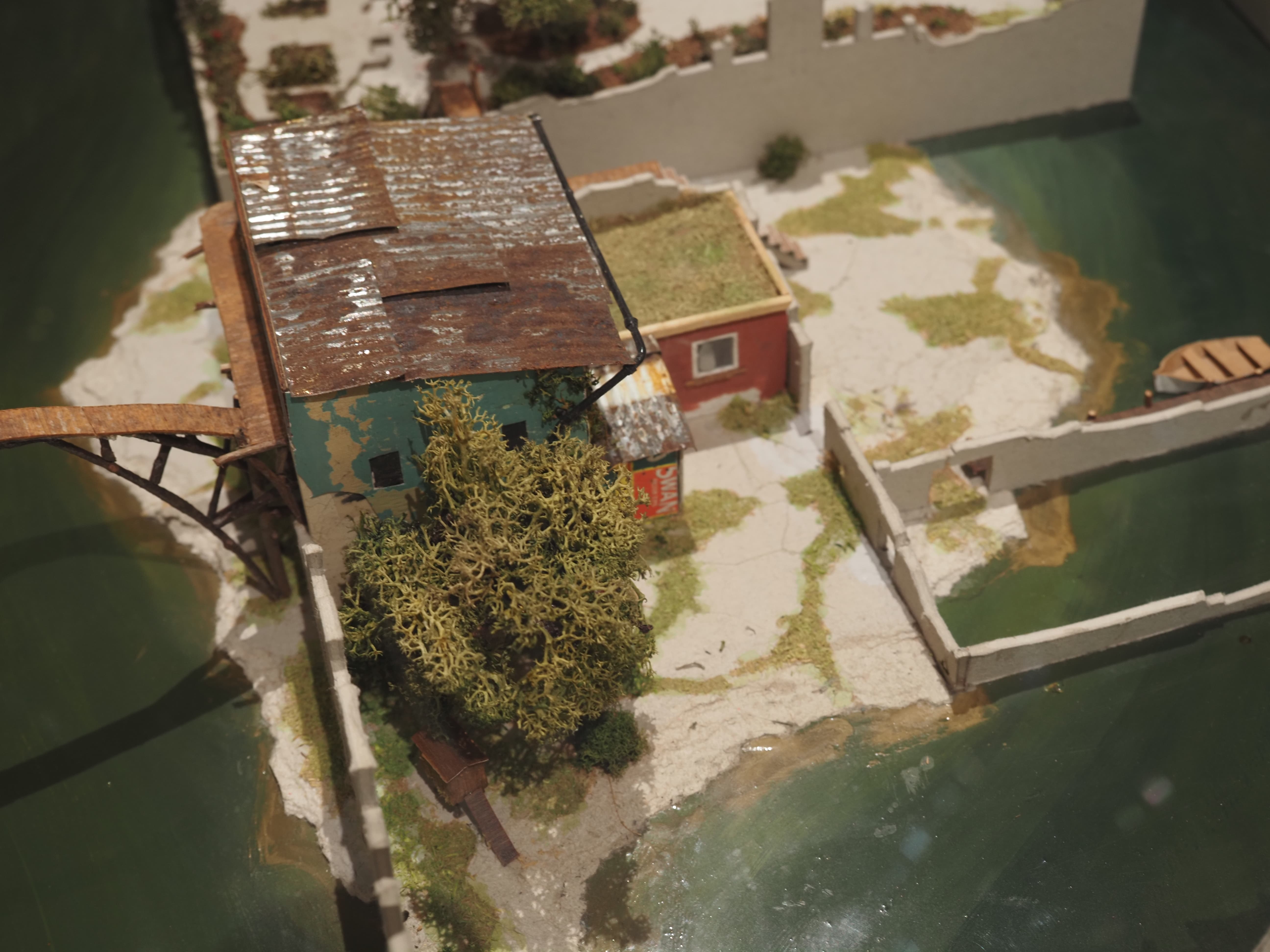
A lot has been said, and probably will continue to be said, about the perceived deficiencies of the Micro Four Thirds format. First, it's half the size of APS-C; however, it's also far larger than the 1-inch sensor format widely employed in compact cameras, and far larger again than the sensors in phones and point-and-shoot compacts.
At low-medium ISO settings, you won’t see much difference in quality between the OM-5’s images and those from an APS-C camera. At higher ISOs you might start to see more difference, but again, it’s not huge. If you compare the OM-5’s results to those from a full-frame camera you'll see more difference but, even here, you have to weigh this against the OM-5’s far lower price, its portability and unobtrusiveness, and the performance of its image stabilization system.
This is extremely effective for stills photography, and pretty good for video too. For static handheld shots it’s so steady that images can look as if they were filmed on a tripod, and with care it’s possible to produce smooth panning movements too. It’s less effective for walking and filming, but that’s true of every mirrorless camera's IBIS system. The stabilization in the OM-5 is just about the best on the market, aided no doubt by the smaller sensor.



The autofocus is competent without being game changing. It doesn’t have the AI subject recognition found in the latest cameras like the Sony A7R V or Canon EOS R6 II, but its face recognition and tracking seem to be pretty ‘sticky’. It’s easily good enough for casual vlogging and photography, especially since the shorter focal lengths used with MFT systems give you more depth of field latitude anyway.
For its size, this camera delivers excellent video and stills quality, with a stabilization system that gives you a really high hit rate of sharp shots.
It’s also worth mentioning the lenses. We tested the OM-5 with three Pro f/4 Olympus lenses: the 12-45mm f/4, the 8-25mm f/4, and the 40-150mm f/4 (which is actually branded OM System). These f/4 lenses are a good match for the OM-5’s size and price (the f/2.8 Pro lenses and f/1.2 primes are a little large). All three are really well made and finished, and deliver excellent results.
The OM-5 isn’t just small and powerful in its own right; it comes with a small and powerful lens range too, which isn’t just lighter than larger-format alternatives, but cheaper too.
• Image and video quality score: 4/5
Should I buy the OM System OM-5?
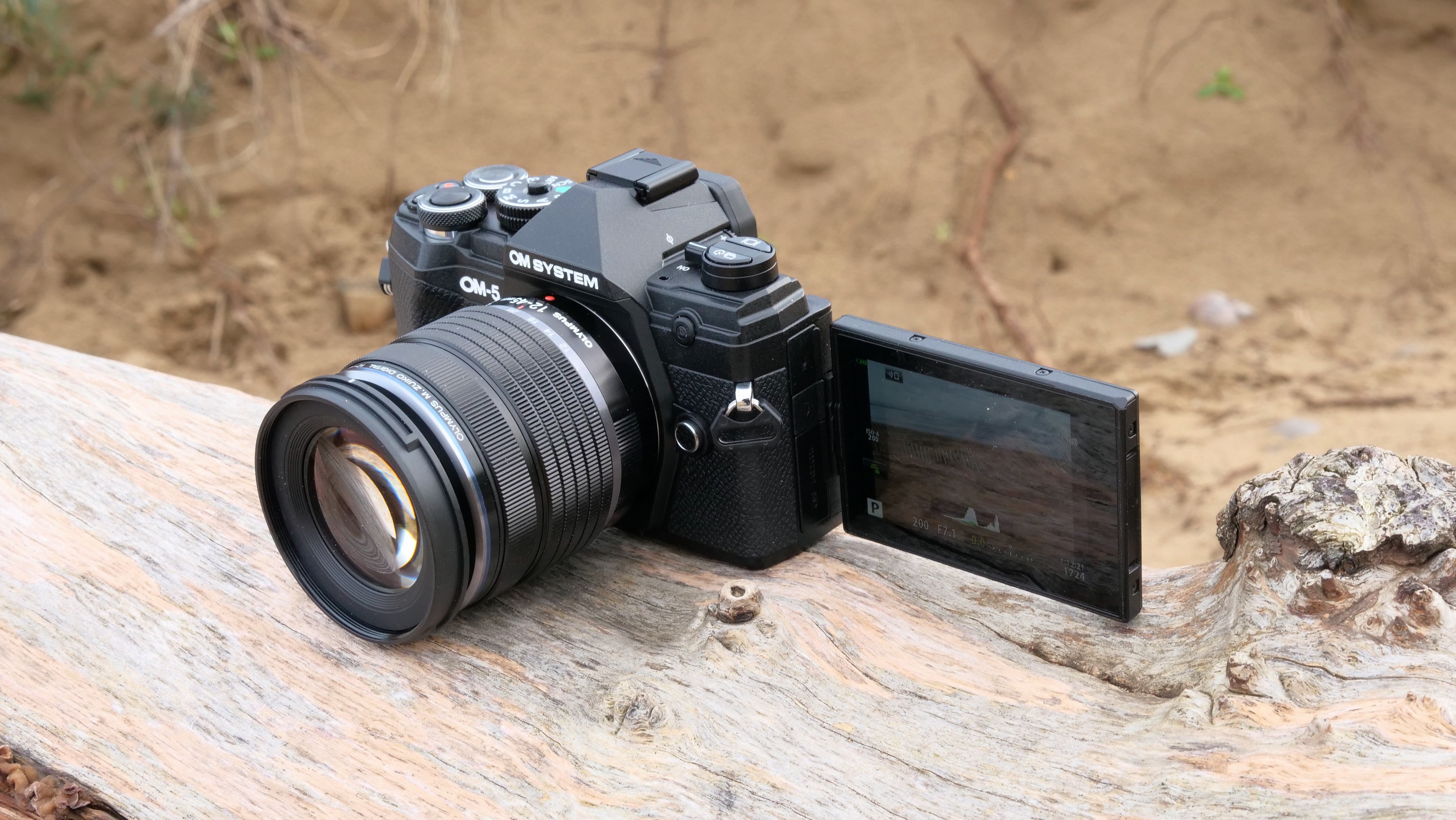
Buy it if...
You want a robust, compact travel/adventure camera
The OM-5 is like a favorite pair of boots or backpack. It’s not flashy, but it’s portable, rugged and dependable. It’s light enough to shove in a backpack, and tough enough to put up with bad weather. For travellers and outdoor adventurers, it’s a perfect package.
You want a wide range of compact, affordable lenses
MFT lenses are smaller and lighter than their APS-C or full-frame counterparts, and cheaper too. If you go for Olympus’s f/4 Pro lenses you also get excellent edge-to-edge sharpness and all-round optical performance; and, although it’s big, the 8-25mm f/4 gives you a unique 16-50mm-equivalent standard zoom.
You don’t like carrying a tripod
The OM-5’s stabilization is excellent for stills, and really good for video too, as long as you understand the limits of mirrorless camera IBIS. The 50MP handheld High Res mode works very well too, and delivers a clear increase in resolving power.
Don't buy it if...
You want the highest levels of image quality
The smaller MFT sensor means smaller photosites, and this means compromises in both resolution and high-ISO quality. The 20MP sensor in the OM-5 is probably as high as the MFT sensor format can go before noise becomes a serious issue.
You have big hands
Usually, small size is a selling point for a camera, and while OM System has done a brilliant job of arranging a lot of controls on a small body, you’ll only ever get three fingers round the grip – and it’s not a very deep grip at that. With larger lenses, it’s often easier to hold it by the lens, not the body.
You shoot video as much as stills
The OM-5 is extremely good as a casual video tool, but if you’re a serious filmmaker you’ll want more control than you get here, and a better choice of codecs. Its strength is in its ability to deliver great-looking video with little effort or user know-how, but it’s no cinema camera.
Also consider...
Fujifilm X-S10
Fujifilm’s cheapest mirrorless camera is far from entry-level, with a vari-angle screen, IBIS and a 26MP sensor. It’s easy to pick up and learn for beginners, but also powerful enough for enthusiasts. It’s the entry-level APS-C mirrorless camera with everything!
Read our in-depth Fujifilm X-S10 review
Nikon Z fc
Not everyone cares about camera tech. If you’re into travel and vlogging, you’ll be looking for a little style too, and the Z fc certainly delivers that. It has the looks of a retro Nikon DSLR, and packs in 4K video and a vari-angle screen, though there’s no IBIS and a mildly disappointing 20MP sensor.
Read our in-depth Nikon Z fc review
Sony A6400
Sony’s A6000-series cameras have been around for a while, and are starting to look a bit dated, but the A6400 still has the specs to compete, with 4K video and very good autofocus – though it has a tilting rather than vari-angle screen, and no in-body stabilization.
Read our in-depth Sony A6400 review
Testing scorecard
| Attributes | Notes | Rating |
|---|---|---|
| Price | Good value given the features you get | 4/5 |
| Design | Very compact body and some compact lenses too | 5/5 |
| Features/performance | 50MP High Res, Live Composite and more | 5/5 |
| Image/video quality | Not cutting-edge but highly capable | 4/5 |

Rod is an independent photographer and photography journalist with more than 30 years' experience. He's previously worked as Head of Testing for Future’s photography magazines, including Digital Camera, N-Photo, PhotoPlus, Professional Photography, Photography Week and Practical Photoshop, and as Reviews Editor on Digital Camera World.
